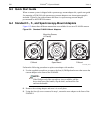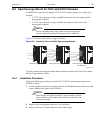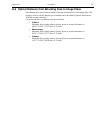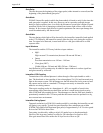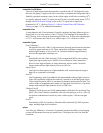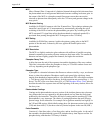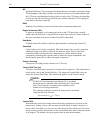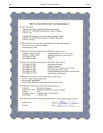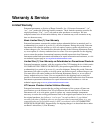
302 PI-MAX
®
4 System Manual Issue 4
Intensifier On/Off Ratio
The ratio of light output when the intensifier is gated on and off: The higher the ratio,
the better the gating. A high on/off ratio is necessary to eliminate the background and to
faithfully reproduce transient events. In the visible region on/off ratios exceeding 10
6
:1
is typically achieved. In the UV region, the on/off ratio is typically much poorer (10
4
:1)
though with MCP Bracket Pulsing, ratios in the UV region can be improved
dramatically (10
7
:1.) Refer to Section 7.4, Micro-Channel Plate (MCP) Bracket
Pulsing, on page 122, for additional information.
Intensifier Size
18 mm diameter and 25 mm diameter. Generally speaking, the larger diameter gives a
larger field of view at the surface of the CCD array. The coupling of the intensifier to
the CCD array is also a factor in determining the field view. A fiber-optic reducing taper
of 1.27:1 will increase the field of view, while a taper of 1:1 will have no effect.
Intensifier Types
Gen I [Obsolete]
Developed in the early 1960s. Used electrostatic focusing and electron acceleration
to achieve signal gains up to 150. These intensifiers could detect images under
ambient light intensity as low as 0.01 lux. Problems included image distortion,
short-lived components, and large size.
GenII
Introduced in the late 1960s and early 1970s. Incorporated MCPs with resulting
signal gain improvement (up to 20,000.) Not as efficient as Gen I intensifiers,
however have high resolution, no image distortion, and are small. Can detect
images under ambient light intensity as low as 0.001 lux.
Super Gen II
Gen II devices that employ novel photocathodes with extended spectral range or
high QE in a particular wavelength.
Gen III
Gen II technology with GaAs added as the photocathode coating. Highly sensitive
in the NIR region above 800 nm but relatively insensitive in the blue/green region.
Utilizes high-resolution MCPs (6 µm diameter channels) and ion-barrier films. Two
to three orders of magnitude more sensitive to light than Gen II devices. Can detect
images under ambient light intensify as low as 0.0001 lux.
Filmless Gen III
Filmless Gen III devices use GaAsP photocathodes which have no ion barrier film
(MCP.) The Gen III filmless intensifiers offer ultra-fast gating as well as >50% QE
for the best combination of sensitivity in the visible region (<780 nm) and gate
speed.
Gen IV
Introduced in 1999. No ion barrier film and exhibit enhanced QE, SNR, dynamic
range, and high-light-level resolution.
lp/mm
Line Pairs per Millimeter. A measure of resolution based on the ability of the imaging
system to differentiate between two parallel lines. The higher the value, the finer the
resolution.



